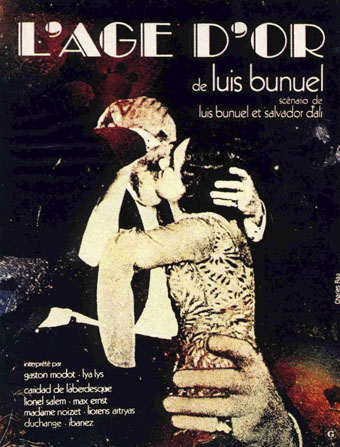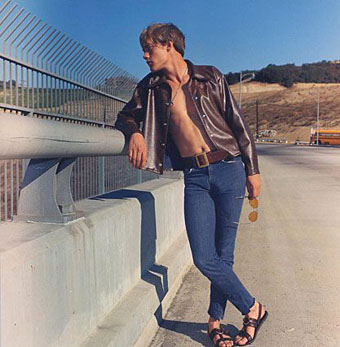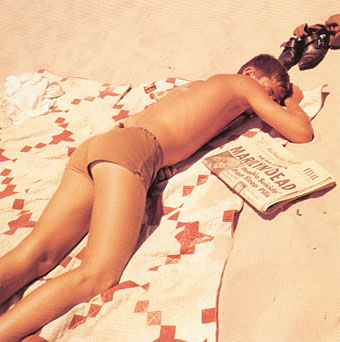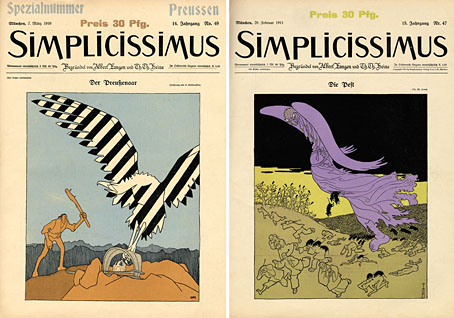Free PDF magazines.
Lots of them, aggregated for your downloading pleasure. Damn. Via.
Day: 5 March 2007
The Surrealist Revolution

The riddle of the rocks by Jonathan Jones
It was the art movement that shocked the world. It was sexy, weird and dangerous—and it’s still hugely influential today. Jonathan Jones travels to the coast of Spain to explore the landscape that inspired Salvador Dalí, the greatest surrealist of them all.
The Guardian, Monday March 5, 2007
I AM SCRAMBLING over the rocks that dominate the coastline of Cadaqués in north-east Spain. They look like crumbling chunks of bread floating on a soup of seawater. Surreal is a word we throw about easily today, almost a century after it was coined by the poet Guillaume Apollinaire. Yet if there is anywhere on earth you can still hope to put a precise and historical meaning on the “surreal” and “surrealism”, it is among these rocks. To scramble over them is to enter a world of distorted scale inhabited by tiny monsters. Armoured invertebrates crawl about on barely submerged formations. I reach into the water for a shell and the orange pincers of a hermit crab flick my fingers away.
The entire history of surrealism—from the collages of Max Ernst to Salvador Dalí’s Lobster Telephone—can be read in these igneous formations, just as surely as they unfold the geological history of Catalonia.
I sit down on a jagged ridge. What if I fell? Would they find a skeleton looking just like the bones of the four dead bishops in L’Age d’Or, the surrealist film Luis Buñuel shot here in 1930?
Buñuel had been shown these rocks by his college friend Dalí years earlier. It was here they had scripted their infamous film Un Chien Andalou. Dalí came from Figueras, on the Ampurdán plain beyond the mountains that enclose Cadaqués, and spent his childhood summers here, exploring the rock pools and being cruel to the sea creatures. In most people’s eyes, this is a beautiful Mediterranean setting. It certainly looked lovely to Dalí’s close friend, the poet Federico García Lorca, when Dalí brought him here in the 1920s: in his Ode to Salvador Dalí, Lorca lyrically praises the moon reflected in the calm, wide bay…
Continues here.
Previously on { feuilleton }
• The persistence of DNA
• Salvador Dalí’s apocalyptic happening
• The music of Igor Wakhévitch
• Dalí Atomicus
• Las Pozas and Edward James
• Impressions de la Haute Mongolie
California boys by Mel Roberts
The Beach Boys got the California girls but it looks like Mel got the boys…some of them, anyway. Makes me wish I was back in Los Angeles again. More of Mel’s work here. Many of his models look like the “youngmen” of the period (late Sixties, early Seventies) that John Rechy writes about.
Simplicissimus
Every issue of the weekly German satire magazine—from 1896 to 1944—is available for download as a free PDF here. Amazing.
Combining brash and politically daring content, a bright, immediate, surprisingly modern graphic style, Simplicissimus featured the work of German cartoonist Thomas Theodor Heine on every cover, and published the work of writers such as Thomas Mann and Rainer Maria Rilke. Its most reliable targets for caricature were stiff Prussian military figures, and rigid German social and class distinctions as seen from the more relaxed, liberal atmosphere of Munich.
Yes, the content is in German but Simplicissimus, like Punch, featured cartoons (some in strip form) and illustrations as well. Each issue also includes a couple of pages of adverts that are fun to look at. Lots of samples from its visual contributors, including the great Heinrich Kley, here. Via Design Observer.
Previously on { feuilleton }
• Revenant volumes: Bob Haberfield, New Worlds and others
• 100 Years of Magazine Covers
• It’s a pulp, pulp, pulp world
• Vintage magazine art II
• The art of Heinrich Kley, 1863–1945
• Neville Brody and Fetish Records
• View: The Modern Magazine
• Vintage magazine art
• Oz magazine, 1967–73



